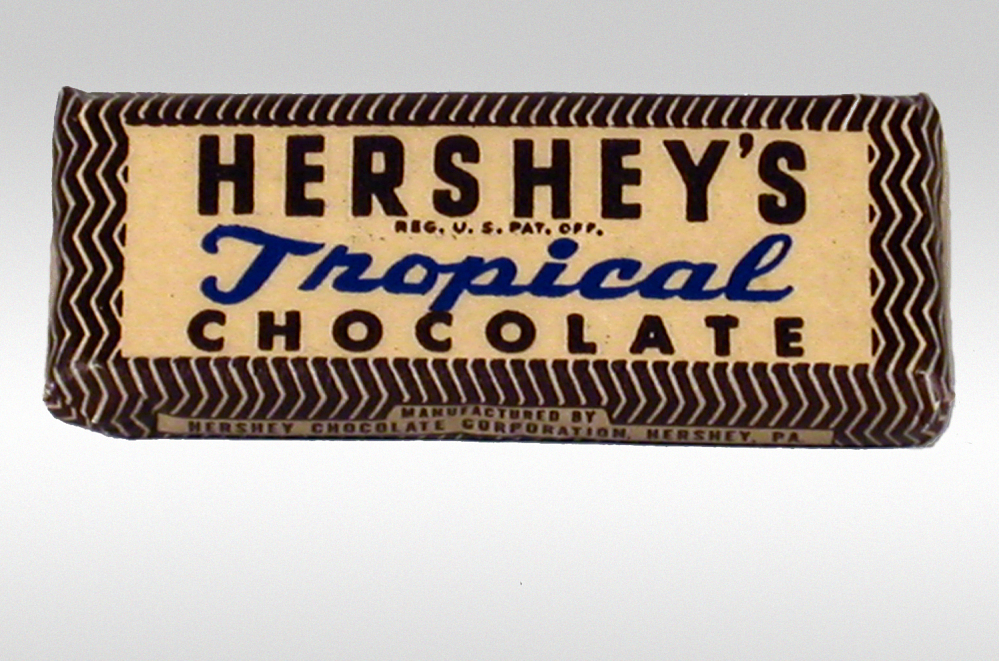In the spring of 1937, with war looming over Europe, Colonel Paul Logan, the deputy director of the subsistence division of the U.S. Army’s Office of the Quartermaster General, saw the need for a candy bar troops could take into the battlefield for a quick, high-calorie energy boost when all hell was breaking loose. And, maybe it’s an officer thing, but one of the requirements he provided to Hershey’s Chocolate was to make sure that soldiers would not want to actually eat the chocolate bars – that they would do so only in the most desperate of situations.
In fact, Logan hoped that the chocolate would taste only “a little better than a boiled potato.” History provides no explanation as to why Logan didn’t just request a boiled potato bar, but that’s in keeping with Army logic.
Hershey’s chemists set about creating a four-ounce, 600-calorie chocolate bar that would be nearly indestructible. Hershey unveiled its creation a few months later – the Field Ration D chocolate bar. Made from chocolate, sugar, skim milk powder, cocoa fat, oat flour, and artificial flavoring, the Field Ration D bar was so dense that the instructions attached stated that the “chocolate” was to be “eaten slowly (in about a half hour)” and could “be dissolved by crumbling into a cup of boiling water if desired as a beverage.” Those troops who did attempt to eat the bars risked chipping a tooth when they bit into them – most had to shave slices off with their knives to get a hit of that sweet, sweet bitter cocoa taste.
By 1943, with U.S. troops fighting in the jungles of the Pacific, the Hershey Corporation was asked to create a bar that could withstand the extreme heat of the Pacific Theater. The result was the Tropical Chocolate Bar, packaged in one to two ounce sizes and only marginally tastier than the Ration D bars.
By the end of war Hershey had produced 3 billion ration bars, churning out some 24 million not-so-melt-in-your-mouth bars per week. It was nicknamed “Hitler’s secret weapon” for the gastrointestinal havoc it wrought. Despite such side effects of its war-time creation, Hershey’s Chocolate Corporation was awarded the Army-Navy “E” Production Award. An award that, per the Smithsonian, “recognized companies that consistently met high standards of quality and quantity in light of available resources.”
It was fortunate, perhaps, that the Army was not put in charge of Halloween.





